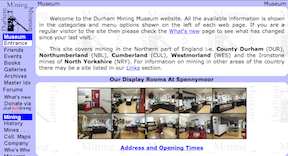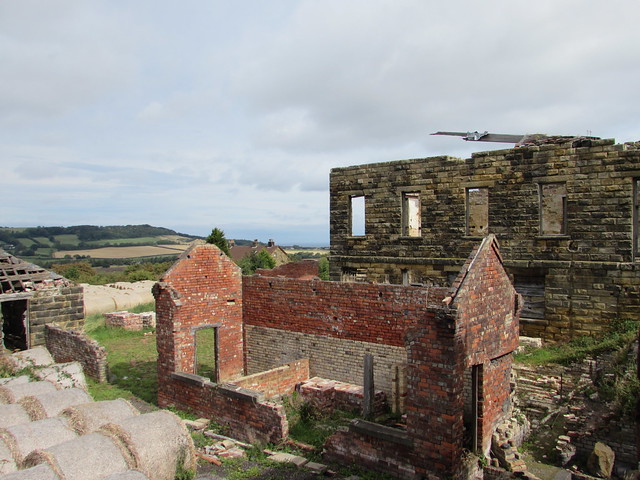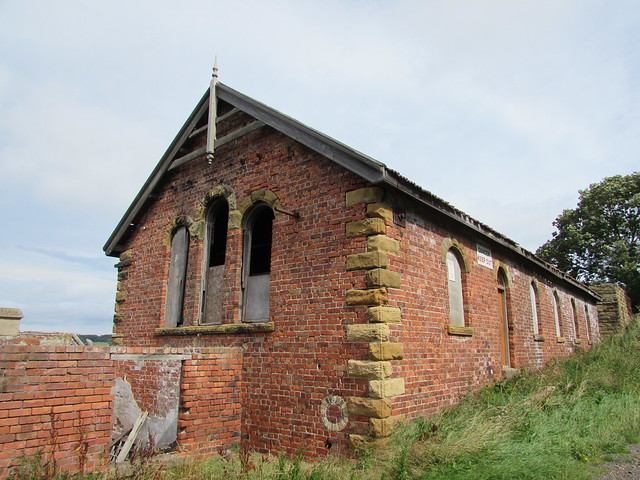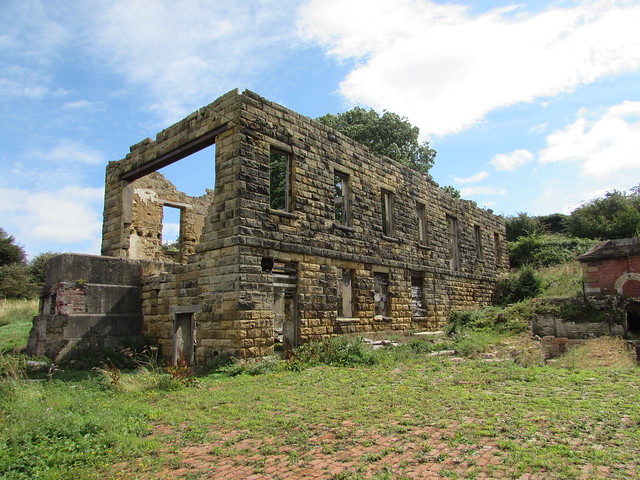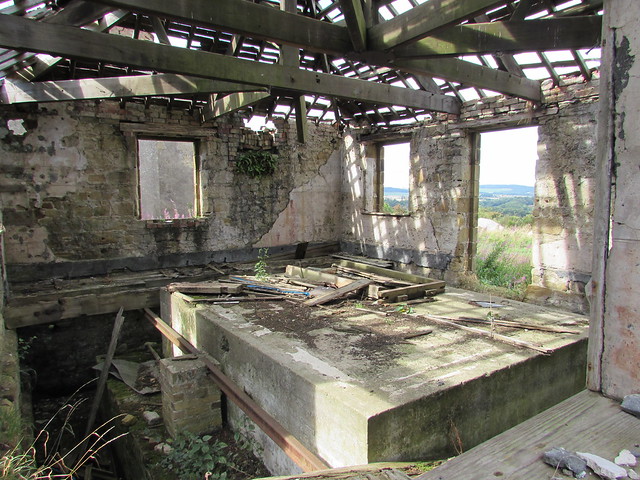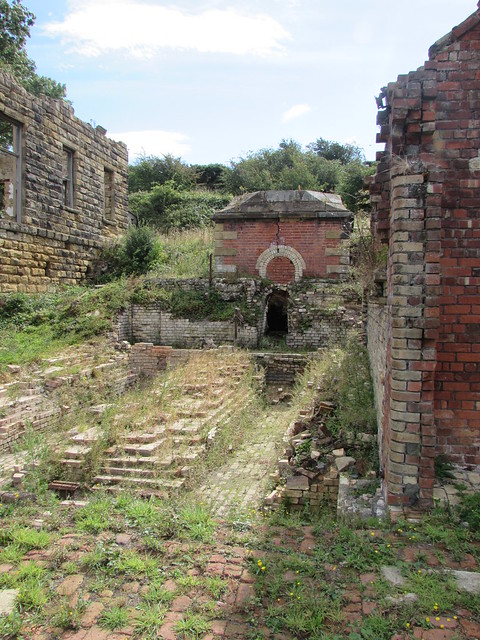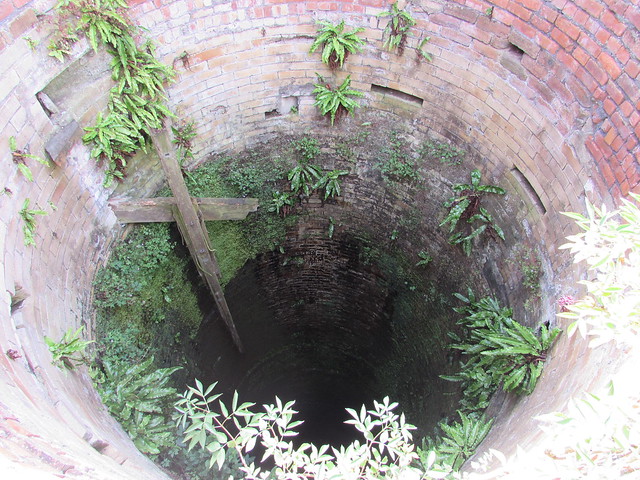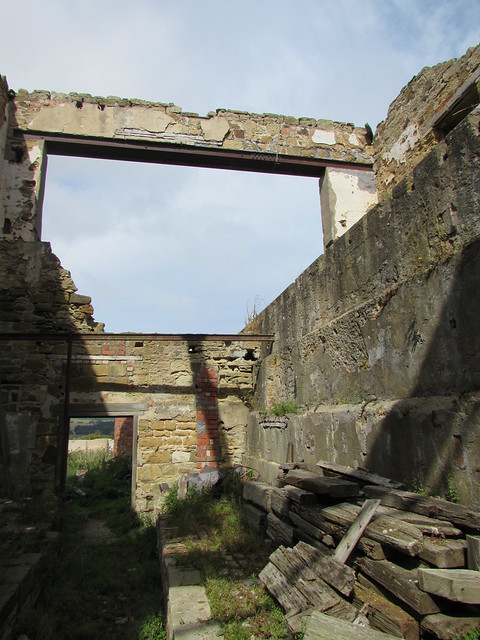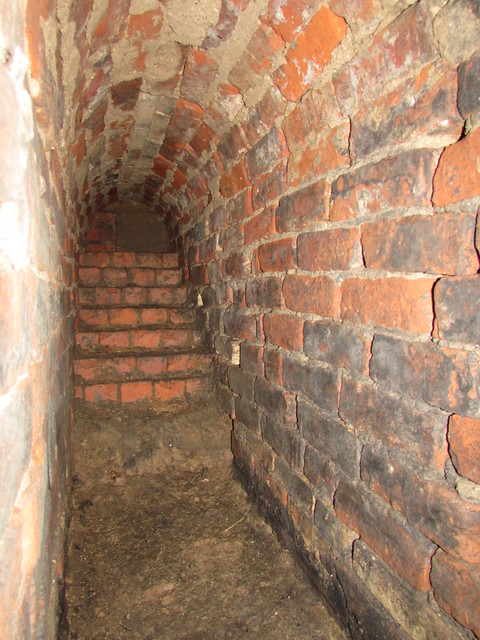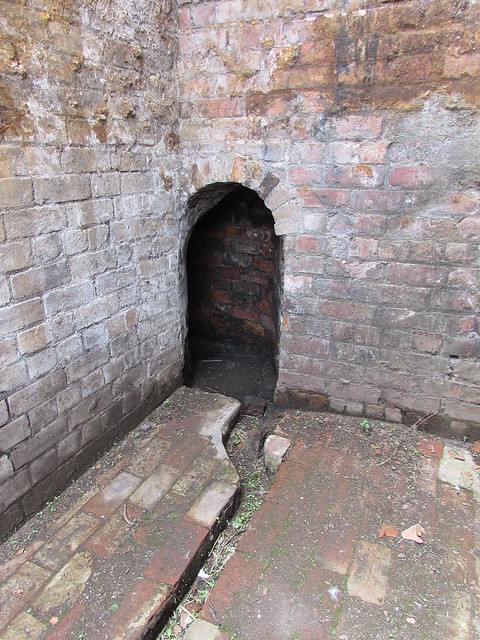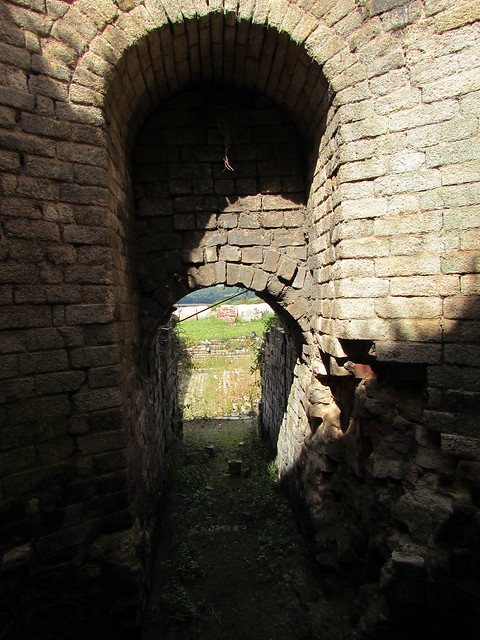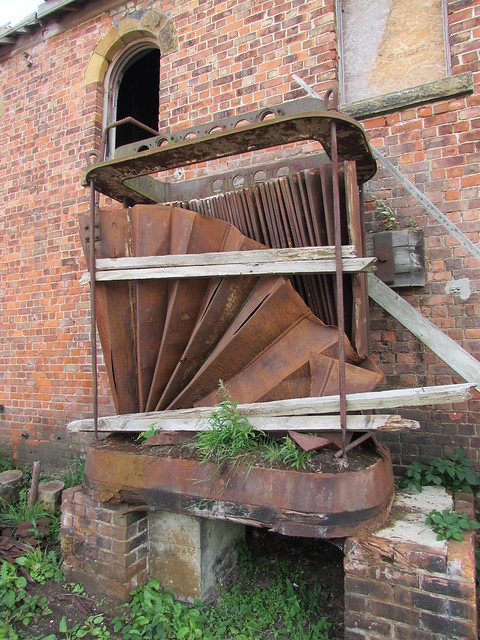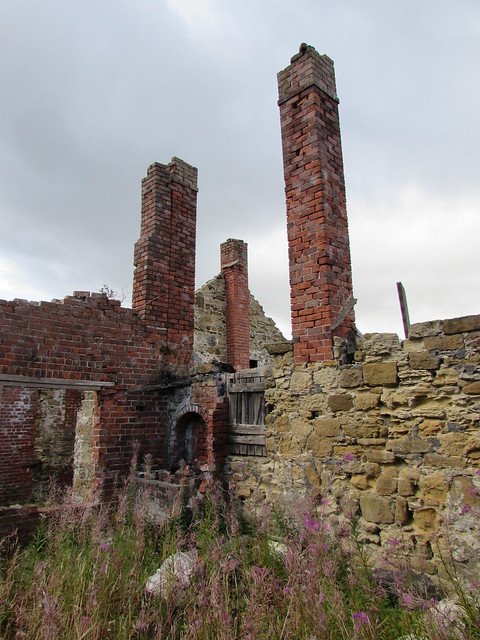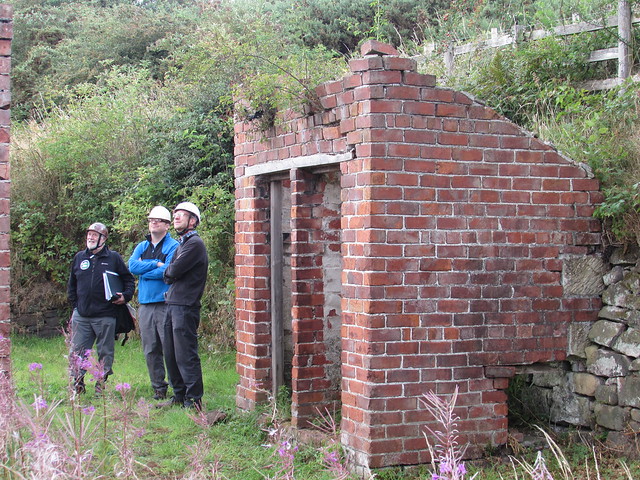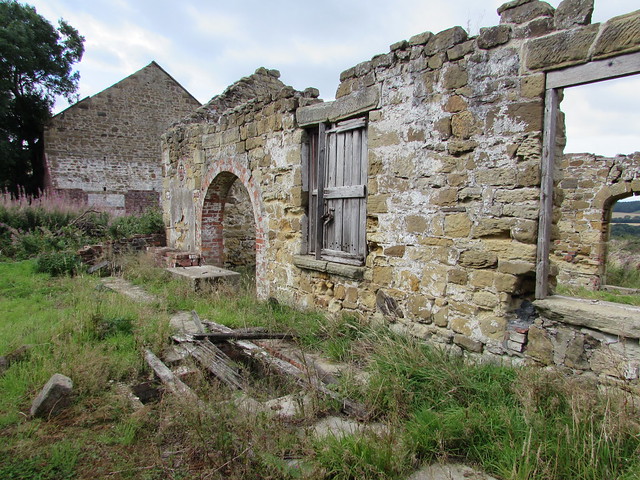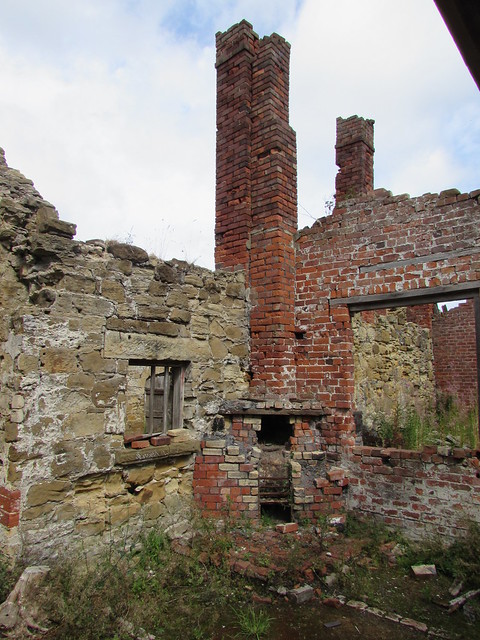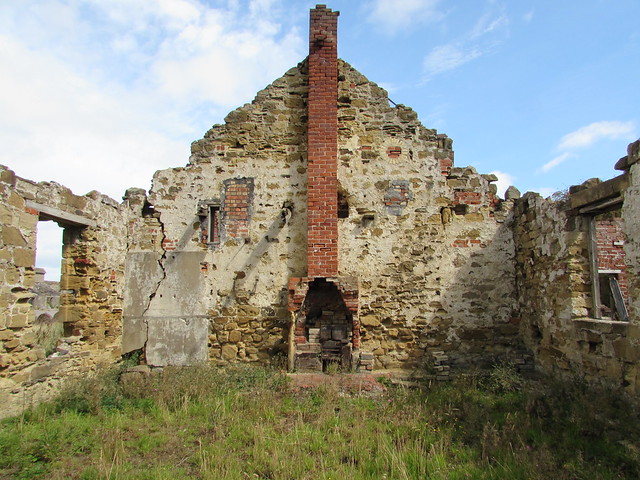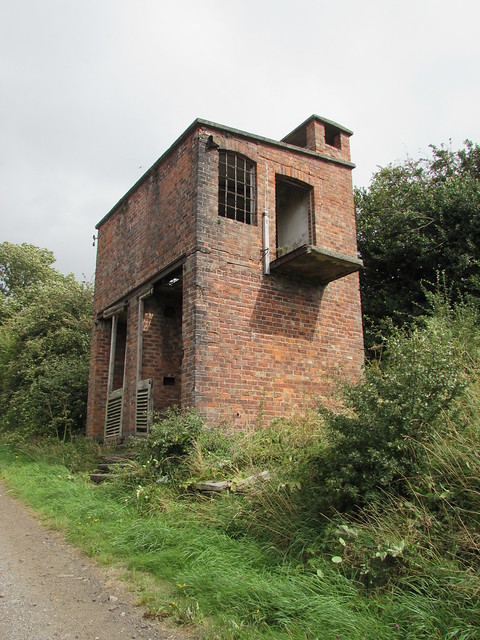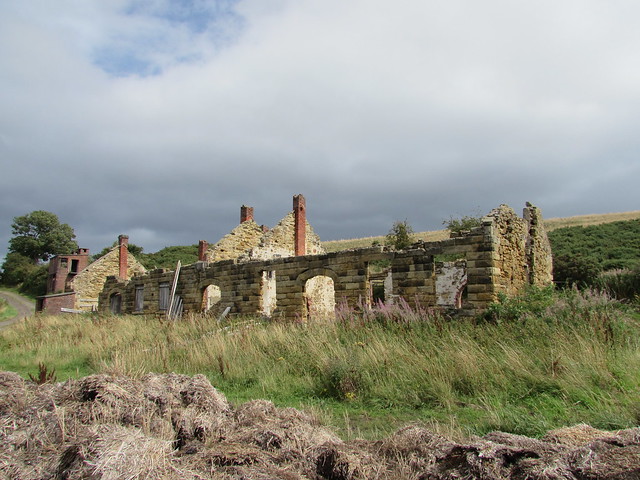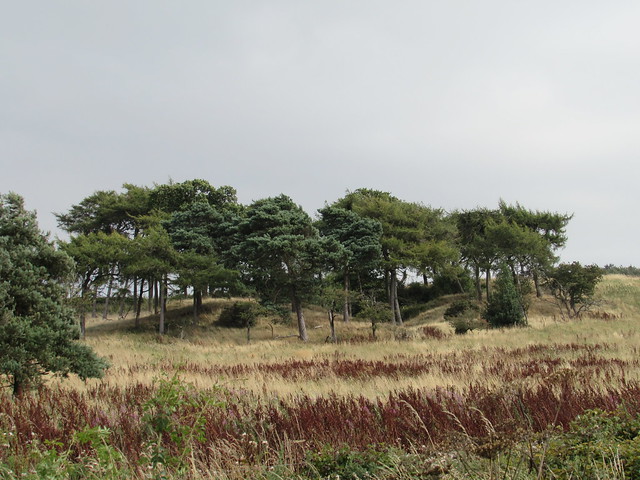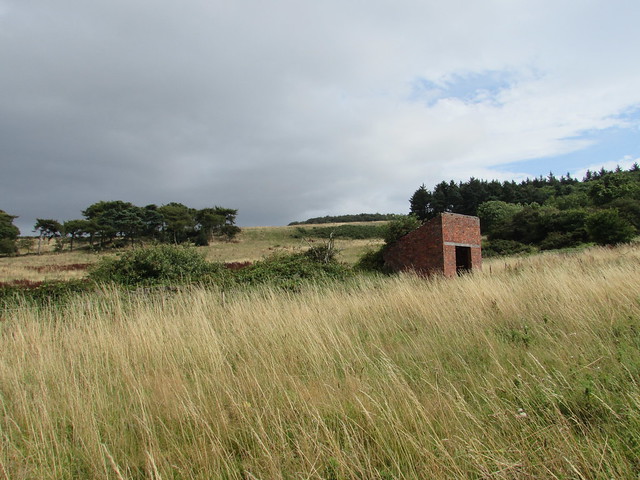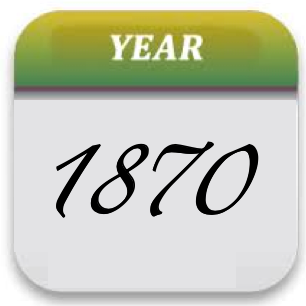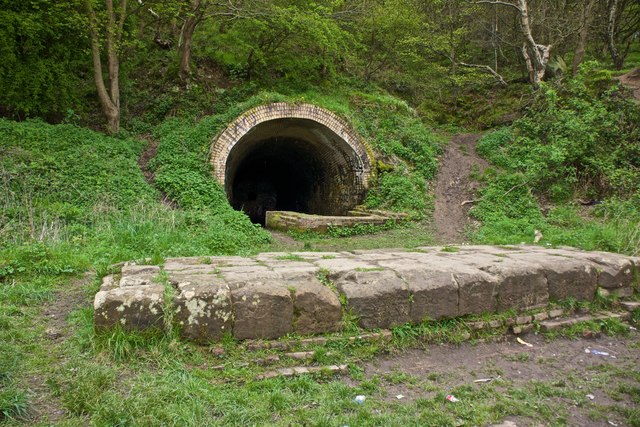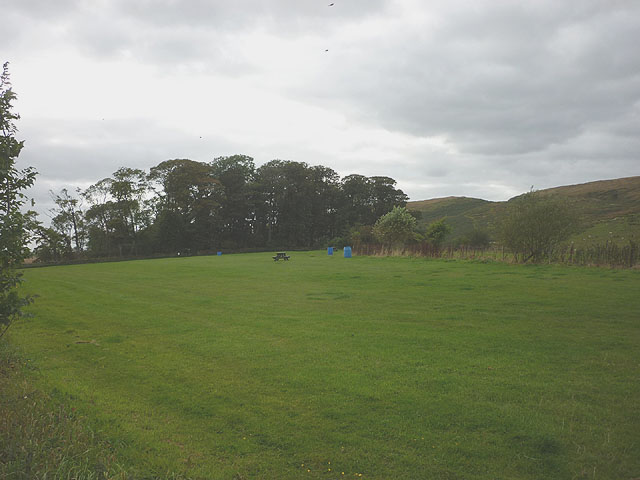Topics > Tees Valley > Skelton-in-Cleveland > Skelton Park Ironstone Mine (1870 - 1938)
Skelton Park Ironstone Mine (1870 - 1938)
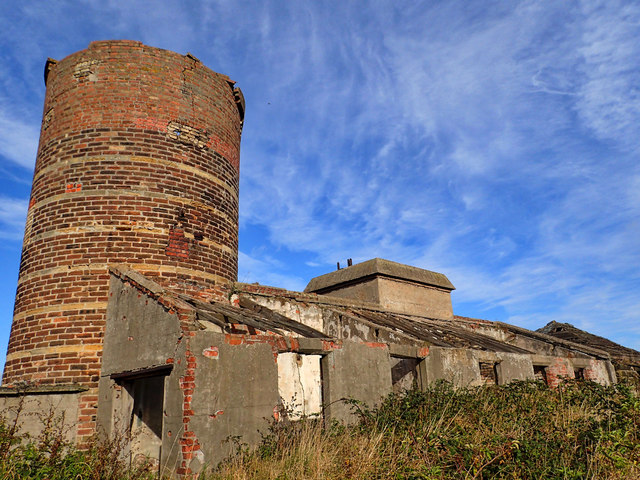 The sinking at Skelton Park ironstone mine started in 1870, by three brothers (Isaac Lowthian, Thomas and John Bell), to supply their ironworks at Port Clarence. The mineral rights and land was leased from Mr Wharton of Skelton Castle. The sinking of the two shafts were completed in 1872, and in 1873 the mine produced 176,238 tons of ironstone. The mine worked the Cleveland Main Seam of ironstone; at Skelton Park the seam was 3.1m thick, at 115m below the surface, with an iron content of about 32% (probably the highest concentration of iron found within Cleveland ironstone).[1] At its peak in 1902, Skelton Park Mine employed 571 people (469 working below ground, 102 on the surface).[2] Park Pit finally closed in 1938 having produced over 18 million tons of ironstone over the years. In 1987 the five principal buildings at Skelton Park Pit were designated as Grade II Listed buildings. These include the fan-house of the upcast shaft, built in 1882, which housed a steam powered Schiele fan to ventilate the mine.[3]
The sinking at Skelton Park ironstone mine started in 1870, by three brothers (Isaac Lowthian, Thomas and John Bell), to supply their ironworks at Port Clarence. The mineral rights and land was leased from Mr Wharton of Skelton Castle. The sinking of the two shafts were completed in 1872, and in 1873 the mine produced 176,238 tons of ironstone. The mine worked the Cleveland Main Seam of ironstone; at Skelton Park the seam was 3.1m thick, at 115m below the surface, with an iron content of about 32% (probably the highest concentration of iron found within Cleveland ironstone).[1] At its peak in 1902, Skelton Park Mine employed 571 people (469 working below ground, 102 on the surface).[2] Park Pit finally closed in 1938 having produced over 18 million tons of ironstone over the years. In 1987 the five principal buildings at Skelton Park Pit were designated as Grade II Listed buildings. These include the fan-house of the upcast shaft, built in 1882, which housed a steam powered Schiele fan to ventilate the mine.[3]
from https://historicengland.org.u…
Fanhouse and associated structures at Skelton Park disused iron mine - List Entry
- "....Skelton Park Pit was originally ventilated using a furnace at the bottom of the upcast shaft. In 1882 a steam powered Schiele fan was installed at the top of the …
Added by
Simon Cotterill

from https://historicengland.org.u…
Main engine house and associated structures, Skelton Park disused iron mine - List Entry
- "...Engine house for pumping and winding the downcast shaft at Skelton Park iron mine dated 1872. Also included in the designation are a number of associated structures such as the …
Added by
Simon Cotterill

from https://historicengland.org.u…
Workshops at Skelton Park disused iron mine - List Entry
- "....Blacksmiths' and joiners' workshops, between 1870-1873 for Bell Brothers' Cleveland iron mines.... single storey, long range of 10 bays. The blacksmiths' is of five bays with a central cart entrance …
Added by
Simon Cotterill

from https://historicengland.org.u…
Powerhouse, office and substation at Skelton Park disused iron mine - List Entry
- "Power generation building (1876) for compressed-air rock-drilling equipment, latterly used to house electric generators. Attached to the building is a time office circa 1900. Also included in the designation is …
Added by
Simon Cotterill

from https://historicengland.org.u…
Secondary winding engine house at Skelton Park disused iron mine - List Entry
- "Secondary winding engine house of circa 1870, originally for underground haulage via the downcast shaft, subsequently altered to wind the upcast shaft....single celled, single storey building with the winding drum …
Added by
Simon Cotterill


from https://historicengland.org.u…
Fanhouse and associated structures at Skelton Park disused iron mine - List Entry
- "....Skelton Park Pit was originally ventilated using a furnace at the bottom of the upcast shaft. In 1882 a steam powered Schiele fan was installed at the top of the …
Added by
Simon Cotterill

from https://historicengland.org.u…
Main engine house and associated structures, Skelton Park disused iron mine - List Entry
- "...Engine house for pumping and winding the downcast shaft at Skelton Park iron mine dated 1872. Also included in the designation are a number of associated structures such as the …
Added by
Simon Cotterill

from https://historicengland.org.u…
Workshops at Skelton Park disused iron mine - List Entry
- "....Blacksmiths' and joiners' workshops, between 1870-1873 for Bell Brothers' Cleveland iron mines.... single storey, long range of 10 bays. The blacksmiths' is of five bays with a central cart entrance …
Added by
Simon Cotterill

from https://historicengland.org.u…
Powerhouse, office and substation at Skelton Park disused iron mine - List Entry
- "Power generation building (1876) for compressed-air rock-drilling equipment, latterly used to house electric generators. Attached to the building is a time office circa 1900. Also included in the designation is …
Added by
Simon Cotterill

from https://historicengland.org.u…
Secondary winding engine house at Skelton Park disused iron mine - List Entry
- "Secondary winding engine house of circa 1870, originally for underground haulage via the downcast shaft, subsequently altered to wind the upcast shaft....single celled, single storey building with the winding drum …
Added by
Simon Cotterill
Grid ref:
NZ644180
